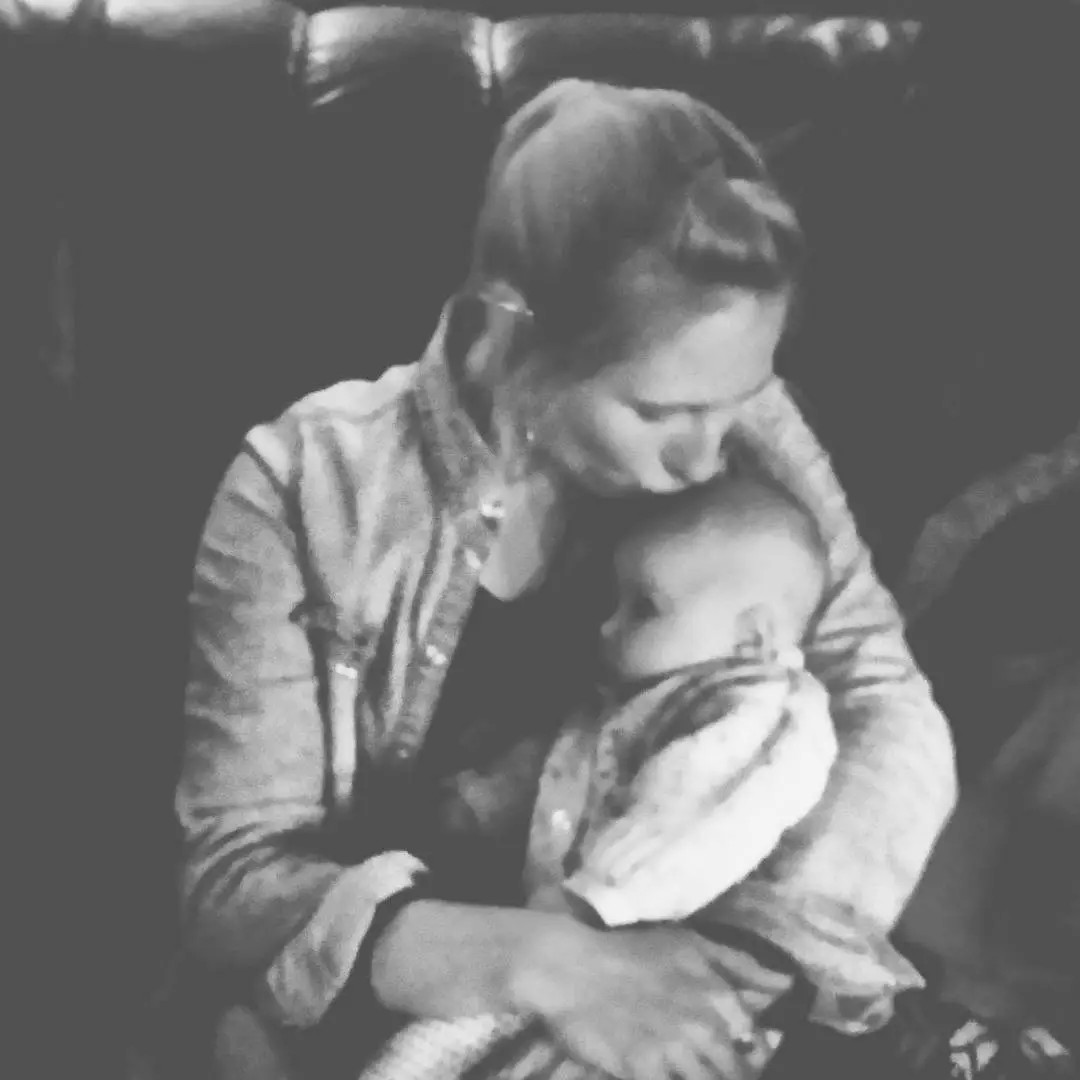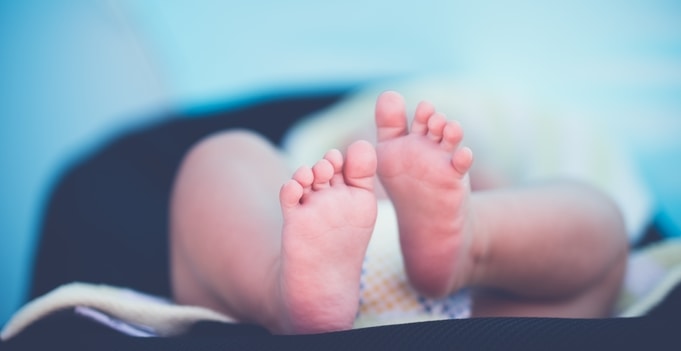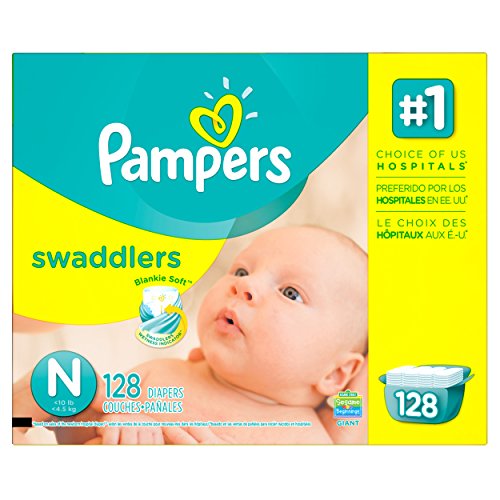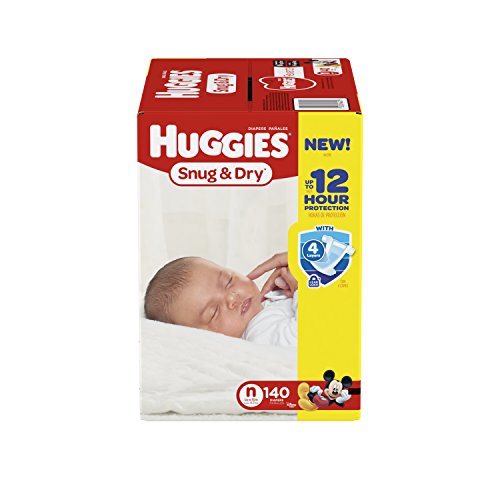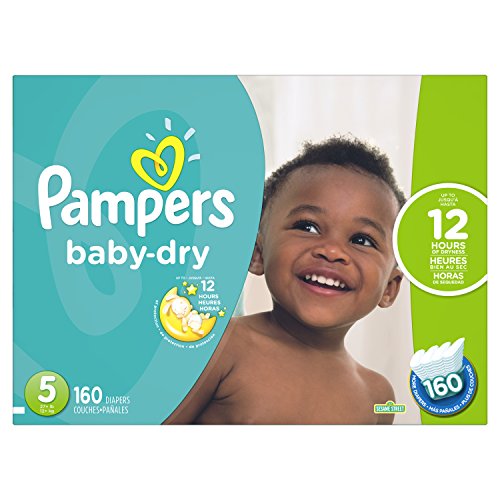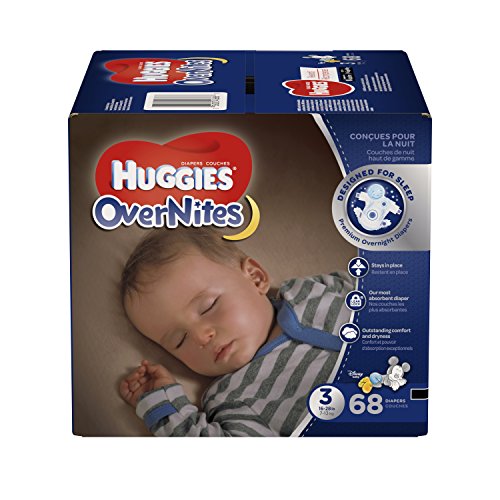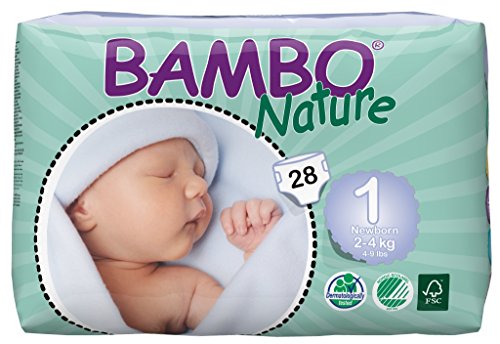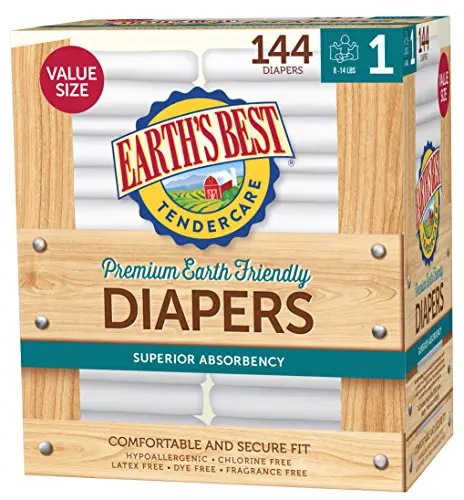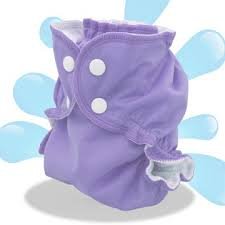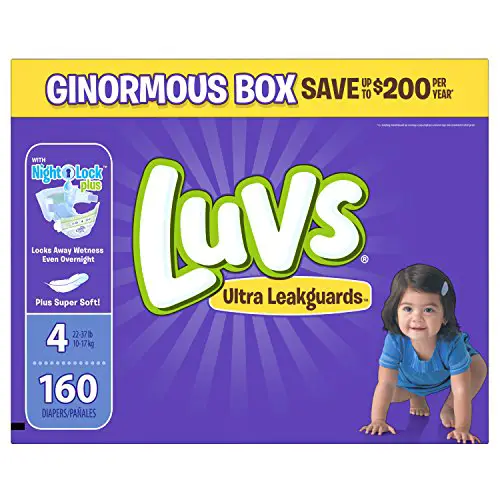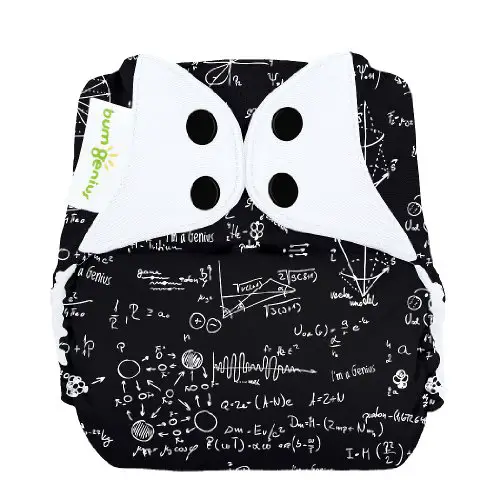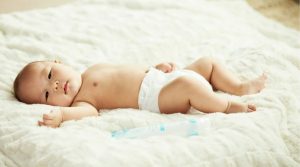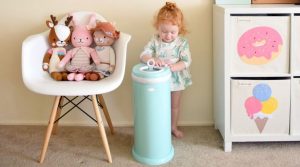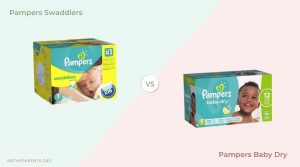Ah, diapers! You are going to be spending a lot of time with them in the foreseeable future. Buying them, changing them, disposing of them (or washing them if you go the cloth route); they’re basically going to become a staple in your life.
Needless to say, it’s important to make sure you pick the right kind of diapers for you and your family. Given all the options on the market, this can be easier said than done.
Do you want cloth, disposables, or a mixture of both? What brands are most absorbent and which are most comfortable for overnight wear? Are eco-friendly much more expensive or worth the extra cost?
These questions can seem as endless as the diaper options lining the grocery store aisle. But don’t worry, with so many choices out there, the odds of you discovering a brand or type you love is virtually 100 percent.
Our ultimate diapers buying guide
Before you can find that diaper “sweet spot” you’ll want to know exactly what makes a good diaper.
Disposable vs. cloth
Disposable diapers consist of a pad placed between two pieces of fabric. They take in the liquid, turning it into a gel-like substance, and wick away moisture, so it will not irritate your baby’s skin. (Whilst we’re on the subject, check out our best diaper rash cream reviews).
They can typically stay on longer than their cloth counterparts and, of course, don’t involve extra laundry. However, they are also more expensive in the long run and add to landfill pollution.
Cloth diapers, on the other hand, come in various types and styles. While cloth diapering can appear daunting, it is not as difficult as you might think. You will ultimately leave less of a carbon footprint and save money on actual diapers. However, you will have to take into account the extra laundry required and added accessories you’ll need to purchase.
For a more in-depth look at what makes a quality cloth diaper and to decide if they’re the right choice for your family, check out our article with its own dedicated buyer’s guide. This guide will now focus on disposable diapers.
Related: Pampers Swaddlers vs. Cruisers (5-mins. Decision Made.)
Disposable diaper layers
A disposable diaper consists of at least three layers. The inner layer rests against your baby’s skin while the outer layer is a waterproof shell, so to speak, ensuring the liquid stays contained. Sandwiched between these two layers is an absorbent core. Super Absorbent Polymer (SAP) make up this core layer and consists of small crystals that can absorb up to 800 times its weight in fluid.
Fit
If your little one’s diaper is too loose or tight, leaks will rear their damp, ugly heads causing serious ‘blowouts’ to occur! The waistband should fall below the belly button, fitting snugly, as should the leg bands. Make sure that no fabric is tucked underneath by running your fingers over the bands. The diaper should be flexible enough to accommodate movement. If you notice red marks on your baby’s skin after removing the diaper, then it’s too small and you need to move up a size.
Remember that not all brands size their diapers the same way. If you are switching brands for any reason, you might want to pause for a moment and make sure you are buying a size that is appropriate for your baby.
Price
No, you are not imagining it. Whenever your baby’s diaper size goes up, you get fewer and pay more. Unfortunately, the big drawback of disposable diapers is the ongoing need to purchase new packs. By the time your child is potty-trained, you will probably have spent between $2,500 and $3,500 on diapers, with eco-friendly products proving even more expensive .
Wetness indicator
Most brands of nappy come with a wetness indicator. This is a line or a pattern that changes color when baby pees into the nappy. We suggest this is no more than just a gimmick. Many brands have a wetness indicator set so sensitive that you will find yourself changing baby’s nappy every few minutes. Nappies are designed to hold quite a lot of wee before it will irritate baby’s skin so you don’t need to change it as often as the indicator suggests. To help you judge when to change a nappy we recommend you use the ‘squidge’ approach; if the nappy feels really squidgy or there is any poop in it all, it’s time for a change. Simple!
Related: Pampers Swaddlers vs Baby Dry (And the Winning Diaper is…)
Now that you know a little about how and why diapers work, let’s get started on some product picks.
Our picks of the best baby diapers
Best newborn diapers: Pampers Swaddlers
When your infant is born, they need special care in every way. Diapers designed for that freshly arrived baby leave the umbilical cord area exposed to promote healing.
Pampers is the most popular diaper brand used in hospitals today, so it’s no surprise that they’re also an Amazon’s Choice brand.
Their diapers for newborns have a notch which ensures the umbilical cord area gets lots of healing time. They can also distribute wetness evenly for up to twelve hours.
As far as diapers go, they are more expensive than most, which is always a drawback. Note to parents; Pampers is a brand that refers to SAP as ‘AGM’ to describe the makeup of the core, so don’t be surprised to see that listed on the packaging.
Pampers Swaddlers come in sizes that will fit a child all the way up to 47+ lbs and is considered an excellent “everyday” diaper until potty training is mastered!
Check Price on AmazonHuggies Snug & Dry Diapers (newborn)
A less expensive alternative to Pampers, Huggies for Newborns comes with that much-needed umbilical cord notch.
Advertising four layers, they claim to contain leaks for up to twelve hours. However, some parents find this not to be the case, so, if you have a heavy wetter, you might want to try a more robust brand.
That said, these diapers come in fun Disney designs, are unscented, and maintain a respectable reputation among most parents. In fact, since Snug & Dry comes in an array of sizes, many parents use this as their “everyday” diaper until their child is potty trained.
Check Price on AmazonBest overnight diapers: Pampers Baby Dry Diapers
A diaper that excels in this category can mean the difference between a pleasant night’s sleep, or a disturbed one with regular diaper changes.
Pampers have achieved another best seller with their Baby Dry product. More affordable than Pampers Swaddlers, they have the same leak-protection time of up to twelve hours.
Because they are scented, some parents find the aroma off-putting. However, as for fit, comfort, and absorbency, they continue to hold their own in the diaper market and are among Amazon’s #1 Best Sellers.
Check Price on AmazonHuggies Overnites diapers
A #1 selling product in overnight diapers, Huggies Overnites provide 25% more absorbency than their Snug and Dry counterpart. They fasten securely at four points with double grip strips while maintaining a soft waistband, and are breathable enough to help your baby stay at a comfortable temperature.
Unfortunately, they start at size 3, so will be too big for any baby under 16 lbs. However, many parents report minimal instances of leakage, even for heavy wetters.
Check Price on AmazonBest eco-friendly diapers: Bambo Nature premium baby diapers
If you have decided not to cloth diapers while still reducing your carbon footprint, these will help you do just that, without the extra laundry loads.
You won’t have to fiddle too much with this diaper while making it fit your baby comfortably. The material is also extremely durable, so feel free to check for wetness whenever you like.
Although it does use SAP for its absorbency (and, to be fair, you really have to cloth diaper to completely avoid this material), the company makes every effort to ensure their product adds minimal strain to the environment while maintaining high standards of safety for your baby.
Its price could be a drawback, otherwise, this chlorine free, certified hypoallergenic diaper delivers on virtually every front.
Check Price on AmazonEarth’s Best chlorine-free diapers
While not cheap, Earths Best are more affordable than most other eco-friendly diapers, and are hypoallergenic, chlorine-free, as well as latex, fragrance, and dye-free.
The material is a little stiffer than other diapers, so babies might not find them as comfortable as some other products on our list.
However, these diapers are made mostly from renewable material sources and hold their own when it comes to absorption ability.
Check Price on AmazonBest swim diapers: AppleCheeks washable swim diapers
Though disposable swim diapers are available, reusables tend to fit and function better. Remember; their job is to contain poop, not pee. So, you might want to wait until you’re poolside before saddling baby up with one of these.
Available in four sizes and with a variety of colors, this swim diaper has two rows of snaps so you can get the best fit (pro tip, use the one that gives you the snuggest fit possible because poopy pools are no fun for anyone!)
The diaper is made of polyester Canadian-milled mesh, has two layers, and allows liquids to pass through while retaining solids safely inside.
Check Price on AmazonBest bargain diapers: Luvs Ultra Leakguards
It’s no secret that diapers can put a drain on your finances. Luckily, some companies cater to those of us who love a good deal!
Available in sizes Newborn to 6, these diapers are both affordable and functional. That said, you are not going to get the stellar performance that you do with more expensive diapers, and parents do report things like leaks and noisy material.
These diapers come with a money-back guarantee, and your baby can wear them overnight.
Frankly, though other diapers do it better, this is hardly the worst choice and is an affordable product at a pinch.
Check Price on AmazonBest cloth diapers: BumGenius Freetime all-in-one cloth diaper
As mentioned above, you can view our whole article on cloth diapers, along with our reviews, here. In the meantime, here is a summary of one of our favorites.
This cloth diaper requires no inserts and, in fact, has a unique patent-pending design. It closes easily with snaps, so no complicated folding, is easy to clean, and offers a wide range of colors.
Although a bit bulky, it’s ideal for those new to cloth diapering while also absorbent and comfortable for your baby.
Check Price on AmazonWrapping up
Diapers may consume your world for the next few years but, once you find one that does the job well, a full diaper pail will simply be par for the course.
Just remember; time flies, so potty training and proper tooth brushing are just around the corner. Of course, by the time you’re teaching your child how to use the toilet, diapers could start looking pretty darn good!

